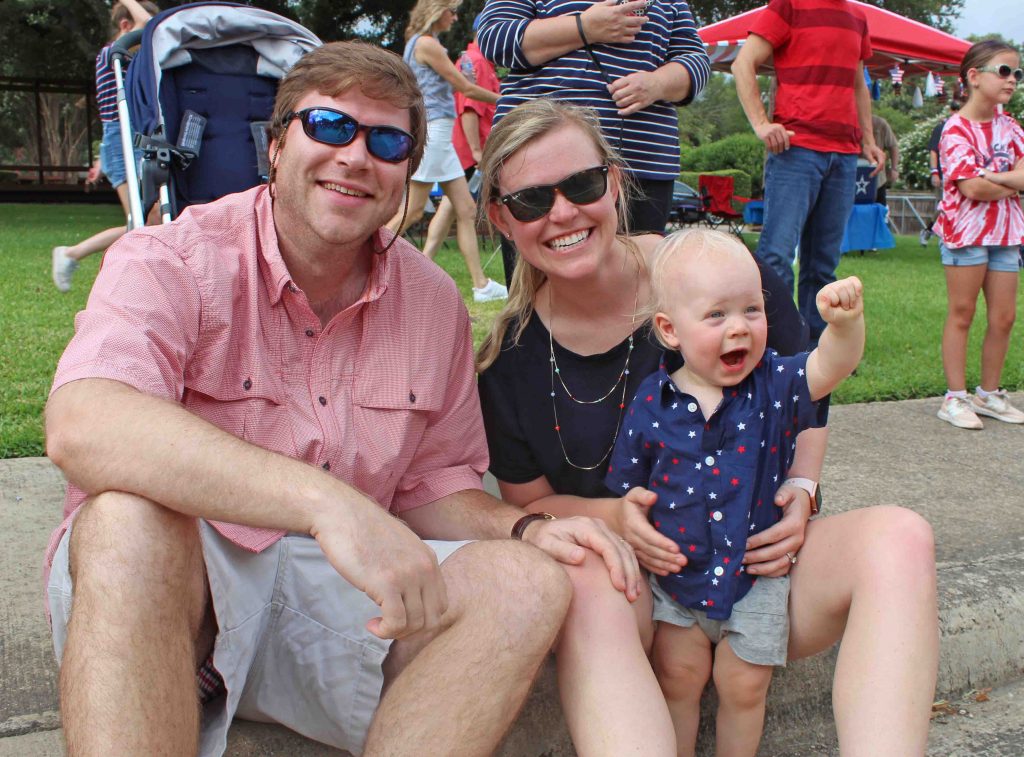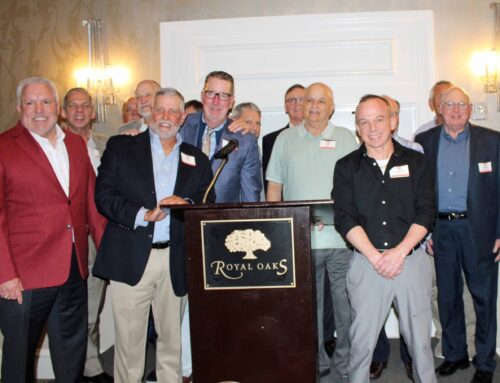On a Sunday morning nine months ago, Scott and Lindsay Boswell Casey were eating breakfast kolaches with their 11-month-old son, Boswell, and preparing for church. Scott stepped into their bedroom to change clothes and Lindsay went into the nursery to dress the baby. After 2-3 minutes, Scott peaked in to check on his young family’s progress. He found Boswell playing in the corner and Lindsay out cold in the middle of the floor. His wife had suffered cardiac arrest.
Before that January day, Lindsay had been the picture of health. The couple met while working as teen counselors for Camp Dayspring, a sports and recreation camp, and she’d been a varsity cheerleader at Lake Highlands High before heading off to college. An occasional fainting spell, tied to her low blood pressure, was no worry to doctors.
“My first thought was that she’d fainted again,” remembers Scott. “I figured I should get her food and water, but she wasn’t responding at all. There was a breath only every 8 or 9 seconds. I knew something was wrong, but I didn’t know the full extent.”
He called 911.
“The dispatcher said to start CPR,” says Scott, “but Boswell thought I was playing, so he kept coming over and climbing in the middle. I didn’t know the severity. I just thought Lindsay would come back to me.”
The Caseys had recently purchased a home near Moss Haven Elementary, not far from Fire Station 28 at Greenville Avenue and Royal Lane.
“The front door was locked, so I had to pause CPR and go crack the door and come back,” recalls Scott. “We had an incredible response time from paramedics, who arrived in 3-4 minutes. As soon as they came in, I got Boswell and got out of there and sat in the living room with paramedic Lori Minihan. I was kind of having a panic attack at that point. I couldn’t feel my arms or my head. I just didn’t know what was going on.”
Paramedics loaded Lindsay into the ambulance and shocked her twice with their defibrillator to get her heart restarted. Boswell was too young to ride in the ambulance, so Scott and the baby got into the car for the drive to Texas Health Presbyterian Hospital.
“I was terrified,” says Scott. “I was just trying to be careful on the road on the road and keep Boswell safe. Luckily, it was a close drive.”
He telephoned Lindsay’s parents, Jana and Mike Boswell, but it must have been a confusing call.
“It was early and I was frantic,” says Scott. “I think I said she was unconscious and they needed to get to the hospital now. I said the same to my parents, and they did a U-turn on the way to church. I thought it was good news that I hadn’t gotten a call from the hospital. We just started praying.”
Doctors stabilized Lindsay and used hypothermia to put her into a coma to enable her body to recover.
“I wasn’t aware of anything going on around me,” says Lindsay. “People just don’t survive cardiac arrest – only about 5-8%, and many of those have brain damage. I think Scott stressed a lot about whether he had done everything right.”
“I didn’t know if she’d remember me when she woke up,” agrees Scott. “They warned me about various bad outcomes. I didn’t know if she’d be able to walk.”
To this day the cause of the event is not known. Peripartum cardiomyopathy (PPCM) has been ruled out and Long QT syndrome (LQTS) is considered unlikely. Her doctors’ goal for “full recovery” is 55% ejection fraction, or blood pumped out of the ventricles with each contraction, and Lindsay was at 54% at her last checkup. At the time of her event, she tested around 5%.
Lindsay went back to work after a few weeks, but doctors prohibited her from driving for 6 months. Scott, Jana and Mike chauffeured her to work, heart rehab and errands until then. Doctors installed a defibrillator, which gave the family peace of mind. It hasn’t activated to pace or shock her heart yet.
“It’s nice knowing [cardiac arrest] can’t happen again,” says Scott. “but I do worry about her.” He recalls a moment when Lindsay tripped over the baby and the dog playing on the nursery floor. Scott was there in a flash.
“The biggest change is we’ve found so much appreciation for playing with our son and enjoying beautiful days like today,” says Lindsay, holding up her hands. “Sometimes our friends will talk about how hard it is having a toddler, but I’m not bothered when he’s fussy or wakes me up in the middle of the night. I appreciate being able to take care of him.”
“It made me realize what’s important in life,” agrees Scott, “to evaluate my priorities and realize how lucky we are to still have Lindsay. Standing in the ER waiting room crying, I was thinking about how we’d just started our young family and how far we have to go.”
Texas Health Presbyterian hosted a luncheon for the couple, enabling them to reunite with the team that brought Lindsay back to life. Lindsay went around the room introducing herself to trauma specialist Dr. Justin Neff, 911 dispatcher Sherrie Lopez, paramedic Brandon Powell and a host of other physicians, nurses and first responders. They all chuckled.
“Yes, we know you,” they replied.
“They said recovering the way I did required a perfect chain of events,” says Lindsay. “It started with Scott, but you can’t survive with just someone doing CPR. I had the instant CPR, the great 911 dispatcher, the 3-minute response time, the shocks, the hypothermia, the advanced hospital – all of these things I didn’t even know were going on. It’s pretty crazy they all worked in my favor.”
Lindsay, who works in a wealth management firm, did lots of research afterward trying to understand what happened to her and admits she felt a hint of failure after her health emergency.
“How in the world could this have happened,” she wonders. “It’s confusing. But now I feel empowered. It’s very rare that people survive. I really have to be thankful. Many people who go through this don’t get that chance. If this had happened at 8 a.m. on a Monday [after Scott left for work], I wouldn’t be alive. I would have died in front of my son and he would have been alone all day. Or it could have happened while I was driving Boswell to day care on my way to work. It could have happened anywhere. That sometimes is hard to process, but we’ve been faithful through this process.”
The family has delivered treats to Fire Station 28, but they know they’ll never be able to properly show their appreciation.
“At the luncheon, I thanked everyone for their quick actions and the way they all took care of me,” says Lindsay. “I don’t know if they realize the impact they’ve had on my life. I think about all of the first responders and doctors all the time.”
The couple has organized CPR classes for friends and family.
“Hands-only CPR is a life-saving skill everybody should know,” Lindsay says. “In a lot of countries, they teach CPR in school. You hear stories of people like me – a healthy 30-year-old or a healthy football player who collapses on the field or a healthy doctor who collapses at a marathon. You think it will only happen to unhealthy people, but that’s not always the case.”
You can watch the American Heart Association’s 2-minute training video for hands-only CPR (no breaths required) below.
Life is close to normal now, and the Caseys even plan a winter ski trip, exertion they thought might never be possible for Lindsay again. Scott says he could never have gotten through the ordeal without the support of friends and family, who delivered food, helped with Boswell and brought clean clothes from home during Lindsay’s 8 days in the hospital. Four pastors from Highland Park United Methodist Church visited to pray with the group, he says, and just after one prayer session Lindsay’s breathing tube was removed.
“That was a major hurdle in the recovery process,” says Scott. “It reaffirmed our faith even more.”






